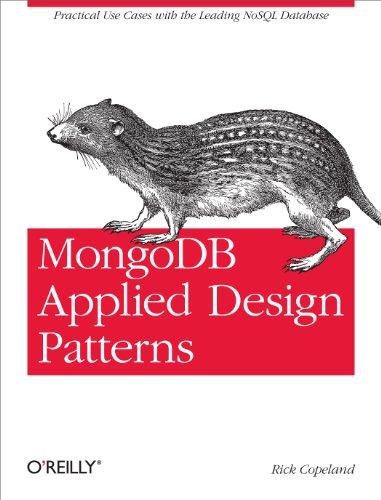Question
QUESTION 1 There are many advantages to choosing Linux and other open-source software. Match each advantage with the correct explanation. - A. B. C. D.
QUESTION 1
-
There are many advantages to choosing Linux and other open-source software. Match each advantage with the correct explanation.
- A. B. C. D. E. F. G. H. Performance
- A. B. C. D. E. F. G. H. Portability
- A. B. C. D. E. F. G. H. Extensibility
- A. B. C. D. E. F. G. H. Customizability
- A. B. C. D. E. F. G. H. Cost
- A. B. C. D. E. F. G. H. Stability
- A. B. C. D. E. F. G. H. Security
- A. B. C. D. E. F. G. H. Social consciousness
A. The ability to add features to the software so it can perform additional tasks or work with more types of data.
B. The ability to use the system to help others.
C. How likely the system is to encounter errors, crash, break, fail, etc.
D. How much it costs to deploy and maintain a system.
E. The ability to run or easily adapt the software to run on different devices.
F. The amount of protection the system offers and how difficult it is for malicious users to break, compromise, or gain unauthorized access to the system.
G. The speed at which a process can be completed and the amount of system resources used to complete it.
H. The ability to modify the software to perform its job in a different way.
QUESTION 2
-
Linux often seems very technical to new users because the UNIX operating system was originally created for users who were also programmers.
True
False
QUESTION 3
-
____ provide data values for the command to work with. (i.e. "what to do the command TO")
a. Arguments
b. Metacharacters
c. Keywords
d. Options
QUESTION 4
-
Copyrighted software with distribution terms that give everyone the rights to use, modify, and redistribute the program's code, or any program derived from it, only if the distribution terms are unchanged is called _____.
a. public domain
b. proprietary
c. open source
d. copyleft
QUESTION 5
-
Given the command string `ls -l /etc`, which element is an argument that tells the command which directory to list the contents of?
/etc
-l
ls
none of the above
QUESTION 7
-
Which command gives you information about how to use another command?
a. --help
b. REISERFS
c. man
d. apropos
1 points
QUESTION 8
-
The `apropos` command is used to find commands pertaining to a given keyword.
True
False
QUESTION 9
-
The synopsis for the `ls` command reads "ls [OPTION]... [FILE]...". What does the ellipsis (...) after FILE mean?
a. You have to type the square brackets when you type the command.
b. That the FILE argument is optional.
c. You can click on the word inside for more information.
d. That the `ls` command will accept multiple file arguments.
QUESTION 10
-
[root@LinuxIntro-21 ~]#
The default prompt, shown above, displays all of the following information EXCEPT _____.
a. hostname
b. email
c. user
d. current working directory
QUESTION 12
-
Dennis Ritchie invented what programming language, which was then used to rewrite the UNIX operating system?
a. Pascal
b. PERL
c. Python
d. C
QUESTION 13
-
Given the command string `ls -l /etc`, which element is an option that modifies the behavior of the command to show more details about each element in the directory?
/etc
-l
ls
none of the above
QUESTION 14
-
The apropos list command produces the same results as which command below?
a. man -j list
b. man -m list
c. man -l list
d. man -k list
QUESTION 15
-
The synopsis for the `ls` command reads "ls [OPTION]... [FILE]...". What do the square brackets around FILE mean?
a. That the `ls` command will accept multiple file arguments.
b. That the FILE argument is optional.
c. You have to type the square brackets when you type the command.
d. You can click on the word inside for more information.
QUESTION 16
-
____ are specific letters that start with a dash (-) and modify the behavior of a command.
a. Options
b. Arguments
c. Keywords
d. Metacharacters
1 points
QUESTION 17
-
The ____ stipulates that the source code of any software published under its license must be freely available, and that others can create and publish derivative works so long as those works use the same license.
a. Free Software Foundation
b. Artistic License
c. GNU General Public License
d. Freeware
QUESTION 18
-
In what year was the source code for the Linux kernel released?
a. 1987
b. 1990
c. 1991
d. 1993
QUESTION 19
-
Match each term with its definition.
- A. B. C. D. E. F. A set of instructions that tell the computer how to complete a task.
- A. B. C. D. E. F. Human-readable program code which cannot be run directly on the CPU.
- A. B. C. D. E. F. Binary program code which can be run directly on the CPU.
- A. B. C. D. E. F. A program that converts human-readable code into machine-runnable code for a given processor architecture.
- A. B. C. D. E. F. A special piece of software that manages system resources.
- A. B. C. D. E. F. A piece of software that the user interacts with directly.
Step by Step Solution
There are 3 Steps involved in it
Step: 1

Get Instant Access to Expert-Tailored Solutions
See step-by-step solutions with expert insights and AI powered tools for academic success
Step: 2

Step: 3

Ace Your Homework with AI
Get the answers you need in no time with our AI-driven, step-by-step assistance
Get Started


